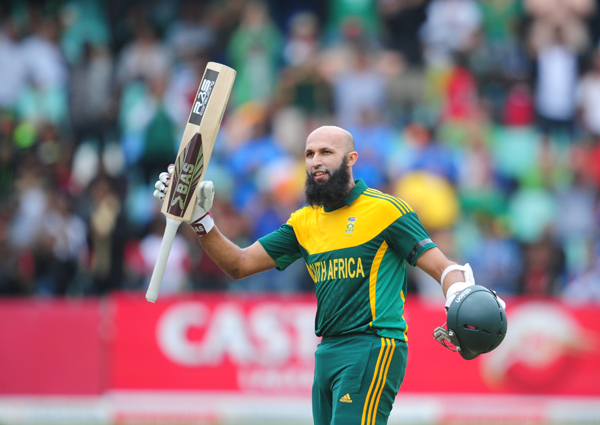Australia won the small battles in Canberra and ultimately it saw them win the war.
The toss was an important one to get right at the Manuka Oval day-nighter. We knew beforehand that the pitch would be vastly different to the fast and bouncy one from Perth on Sunday, but we also knew that a score of 300 would be a tough chase.
The pitch slows up after 25 overs and with the ball getting soft, the batsmen are forced to improvise and put pace on the ball. Steve Smith did it for Australia and only the mercurial AB de Villiers can for South Africa. And so he did with a barnstorming 52 off 34 balls.
Australia had won the toss and batted first, as South Africa would have. But it was after getting to 113 for 0 after 19 overs that Australia produced the first captaincy ace. George Bailey took the batting powerplay.
It forced De Villiers to bring back his big bowling guns and although Australia only scored 23 for the loss of David Warner in the powerplay, it meant that Dale Steyn and Vernon Philander both had to bowl two overs and Morne Morkel one. Ordinarily, those would have been saved for later in the innings.
This meant that the ‘fifth bowler’ – duties shared by De Villiers and Farhaan Berhardien – had to bowl deeper in the innings. It also meant that De Villiers gambled by bowling Morkel in the 50th over and he went for 19 runs, including a no-ball that resulted in a superb ‘catch’ by Faf du Plessis.
That no ball was one of four bowled by South Africa, while they also sent down seven wides, which meant an 11 extra balls in total, which was 11 runs plus the runs scored from them. That was the difference between Australia getting less than 300 and more than 300. By comparison the hosts bowled one no ball and two wides. Another small battle won by Australia.
When South Africa chased – and they’re the world kings of the chase – they did so well, getting to 108 before Quinton de Kock departed for a 53-ball 47 in the 19th over. It was still game on.
However, this is the stage when Australia had taken their batting powerplay.
At 30 overs South Africa were 158-3 and still required 172 off 20 overs with seven wickets remaining. They still hadn’t taken the batting powerplay but by then the horse had bolted, despite some pyrotechnics by De Villiers, before he ironically went out in the powerplay.
Hashim Amla hit form for the first time in the series but when he struck Shane Watson for four in the 31st over to take him to 85 it was the first time since the 13th over, when he was on 41, that he’d hit a boundary. Despite speeding up when joined by De Villiers, with the pair putting on a breezy 76, and Amla himself making 102, he would have benefited from earlier use of the powerplay.
Ultimately they were forced to take it after 35 overs and in the powerplay they lost De Villiers, Amla and Miller.
This match was tight and yet the small margins kept going Australia’s way. South Africa elevated Behardien above Miller in the chase – why? – and when Miller was given out, lbw for three, he was unable to review because the review had been used unsuccessfully in De Villiers’ dismissal. Reviews showed the ball was missing Miller’s leg stump.
So, what did we learn? Well, nothing new in that the balance of the team is still wrong. We know that the injured JP Duminy will return, and that he’ll probably replace Behardien. But, that still leaves South Africa with a bowling unit that will leak runs if one of them is off key.
South Africa needs a ‘death’ bowler and not every pitch at the World Cup will be as favourable as Perth was. Perhaps Kyle Abbott should come in for either Morkel or Imran Tahir.
This was also the second time in three ODIs that Australia’s opening batsmen have got away. In the first ODI in Perth they put on 94 for the first wicket and reached 300. In Canberra they got to 118 and reached 329. Both times South Africa were unable to chase successfully.
Remember too that Australia had left out Mitchell Johnson and Glenn Maxwell in Canberra. In going 2-1 up in the series, one can understand why Australia will be the happier team going into the final two games. Canberra was, after all, ‘the most important match of the series,’ according to De Villiers following the victory in Perth.
Photo: Backpagepix







